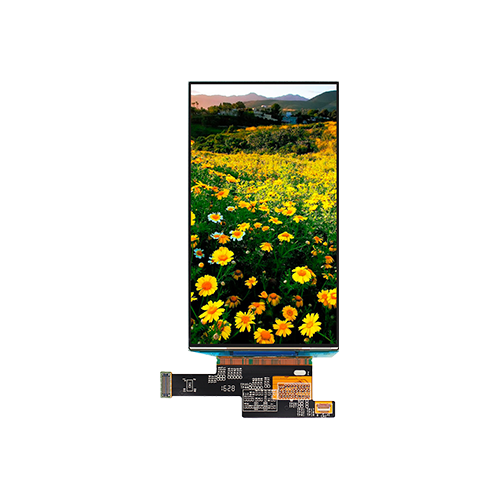
In the realm of display technology, OLED (Organic Light Emitting Diode) stands as a beacon of innovation, offering a breathtaking visual experience that captivates users across various devices. From smartphones to televisions, OLED displays have emerged as the pinnacle of visual excellence, redefining the standards of image quality, energy efficiency, and design aesthetics.
Understanding OLED Technology
OLED displays are distinguished by their unique composition, which includes organic compounds that emit light when an electric current is applied. Unlike traditional LCD (Liquid Crystal Display) screens that require a backlight, OLED panels are self-emissive, meaning each individual pixel can emit its own light independently. This characteristic enables OLED displays to achieve true blacks, vibrant colors, and remarkable contrast ratios, resulting in images that are vivid, lifelike, and immersive.
Advantages of OLED Displays
1. Perfect Black Levels:
OLED technology allows for precise control over each pixel’s brightness, enabling them to emit light or remain completely turned off. As a result, OLED displays can achieve absolute black levels, enhancing contrast and delivering unparalleled depth in dark scenes.
2. Vibrant Colors and Contrast:
With OLED’s ability to emit light directly, colors appear more vibrant and true-to-life. The absence of a backlight eliminates the need for color filters found in traditional displays, resulting in improved color accuracy and wider viewing angles. Additionally, OLED’s high contrast ratio ensures that details are crisp and well-defined, contributing to a richer visual experience.
3. Thin and Flexible Form Factor:
OLED panels are incredibly thin and flexible, allowing for innovative designs that push the boundaries of device aesthetics. From curved displays to rollable screens, OLED technology offers versatility that enables manufacturers to create sleek and futuristic devices.
4. Energy Efficiency:
OLED displays are inherently energy-efficient because they only consume power when pixels are illuminated. Unlike LCD screens, which require a constant backlight, OLED panels consume less energy, leading to longer battery life in portable devices and reduced electricity consumption in larger applications such as televisions.
Applications of OLED Displays
1. Smartphones and Tablets:
OLED displays have become a staple feature in premium smartphones and tablets, offering users vibrant visuals, deep blacks, and power-efficient performance. From flagship models to budget-friendly devices, OLED technology has permeated the mobile market, elevating the user experience across a wide range of products.
2. Televisions:
The adoption of OLED technology in televisions has revolutionized home entertainment, providing viewers with cinematic picture quality in the comfort of their living rooms. OLED TVs boast stunning visuals, high refresh rates, and support for advanced features such as HDR (High Dynamic Range), making them ideal for immersive gaming and multimedia experiences.
3. Wearable Devices:
The thin and flexible nature of OLED displays makes them well-suited for wearable devices such as smartwatches and fitness trackers. OLED screens can be seamlessly integrated into compact form factors, delivering crisp visuals and customizable interfaces that enhance user interaction and convenience.
4. Automotive Displays:
Automobile manufacturers are increasingly incorporating OLED displays into vehicle dashboards, infotainment systems, and digital instrument clusters. OLED panels offer clear visibility in various lighting conditions, contributing to enhanced driver safety and a futuristic interior design aesthetic.
The Future of OLED Displays
As technology continues to evolve, OLED displays are poised to play a pivotal role in shaping the future of visual technology. Ongoing research and development efforts are focused on enhancing OLED’s efficiency, durability, and scalability, paving the way for new applications and innovations.
Emerging trends such as foldable OLED screens, transparent displays, and micro-LED integration promise to expand the possibilities of OLED technology, opening doors to entirely new use cases and user experiences. Whether it’s creating immersive virtual reality environments, revolutionizing healthcare with wearable biometric monitors, or transforming urban landscapes with interactive digital signage, OLED displays are at the forefront of innovation, illuminating the path towards a brighter, more visually captivating future.
In conclusion, OLED displays represent a pinnacle of visual excellence, offering breathtaking image quality, energy efficiency, and design flexibility across a wide range of devices and applications. With their ability to deliver perfect blacks, vibrant colors, and thin form factors, OLED panels continue to redefine the standards of visual technology, captivating users and inspiring new possibilities for innovation. As we embark on an era of digital transformation, OLED displays stand as a testament to the power of innovation and imagination, illuminating our world with brilliance and beauty.
Since our inception in 1990, Microtips https://microtipsusa.com/ has become one of the leading LCD manufacturers in the industry. Our product offering has grown from OLED, Monochrome Displays to a full line of Color TFT Displays, ranging from 1 inch up to 25 inches. We also specialize in customizations. We can take your standard display and support any value-added services you need.
Microtips Technology https://microtipsusa.com/ provides local sales and engineering support in the Americas, Europe, and Asia. We are always available to discuss your project and make sure it will be a perfect fit for your needs.
